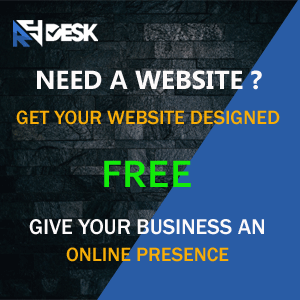Selling to businesses is not the same as selling to consumers — the checkout, pricing, catalog complexity, and integration needs are different. If your company is evaluating a B2B eCommerce Development Agency, this guide will help you choose the right partner, understand core services and deliverables, and set realistic timelines and budgets. You’ll learn what makes a B2B store world-class (from platform choices like headless commerce to mission-critical systems like PIM and OMS), how agencies structure projects, and how RyDesk approaches B2B eCommerce to deliver measurable revenue lift.
Why B2B brands must treat eCommerce differently
B2B eCommerce is no longer optional — it’s central to growth. Research shows that a large and rising share of B2B revenue now flows through digital channels, and buyers increasingly expect self-serve, fast, and personalized purchasing experiences. For example, McKinsey’s B2B Pulse research finds that eCommerce now makes up a significant portion of revenue for many B2B organizations, and companies that prioritize digital selling tend to outgrow peers.
Forrester and other analysts also project multi-trillion-dollar opportunity sizes in the coming years — meaning the market reward for getting B2B digital selling right is huge.
What a true B2B eCommerce development agency does (not just “build stores”)
A genuine B2B eCommerce partner combines product strategy, engineering, and systems knowledge. Expect the agency to offer:
Discovery & roadmap: business rules, pricing models (contract pricing, volume rebates), target buyer journeys, and integrations required with ERP/CRM/PIM.
Platform selection & architecture: advising between SaaS platforms (Shopify Plus), modular/cloud platforms (Commerce Cloud, BigCommerce), open-source (Magento/Adobe Commerce), and custom or headless stacks.
Custom development: secure customer portals, complex price catalogs, negotiated checkout flows, multi-warehouse shipping rules, and advanced B2B UX patterns.
Systems integration: ERP, CRM, tax engines, shipping carriers, and OMS for real-time inventory and order orchestration.
Performance & security: scaling, Core Web Vitals, PCI compliance, and hardened authentication for corporate buyers.
CRO & UX for B2B: quick reordering, saved orders, quote requests, role-based access and approvals, and buyer-specific catalogs.
Ongoing support & growth: A/B testing, headless performance improvements, and incremental feature delivery (e.g., marketplace or punchout support).
If you want a partner who covers all of the above, review agencies’ web development services carefully — and look for case studies showing B2B outcomes, not just pretty storefronts. RyDesk’s services page outlines capabilities across WordPress, custom, and eCommerce projects and is a good place to start when vetting partners.
How to evaluate a B2B eCommerce agency — nine practical criteria
B2B expertise — Have they built contract pricing, approvals, and complex catalogs?
Platform depth — Do they have multiple platform implementations (Shopify Plus, Magento, headless)?
Integration experience — ERP, OMS, PIM, tax and fulfillment connectors matter most.
Security & compliance — PCI, data encryption, and role-based access must be baked in.
Performance engineering — Fast catalog browsing and checkout for complex SKUs.
UX for procurement — Saved carts, RFQs, CSV bulk ordering, and user-role flows.
Conversion optimization (CRO) — A/B testing for product listing, quick order, and checkout flows.
Support & SLA — 24/7 uptime, urgent bug fixes, and predictable release cadences.
Commercial alignment — Do they measure success by revenue, retention, and order value?
RyDesk’s commercialization offers and site packages provide transparent costing and delivery models you can compare during the shortlist phase.
Common services & deliverables from a B2B eCommerce development agency
Platform setup & custom theme (mobile-first, performance optimized)
Custom catalog & pricing engine (per-customer catalogs, tiered pricing)
Account management dashboards for corporate buyers
Punchout & EDI support for procurement systems
Bulk ordering and CSV import/export
Advanced search & product discovery (faceted search, semantic search)
PIM and OMS integration for accurate product and order data
Payment & invoicing workflows (net terms, PO validation)
Migration & data cleansing (catalog, customers, orders)
Analytics & conversion tracking (custom events, LTV analysis)
If you’re comparing proposals, ask each agency for a Deliverables Checklist and sample sprint backlog so you know exactly what you’ll receive each milestone.
Platform comparison (one quick table)
| Platform / Approach | Best for | Time to Market | Scalability | Customization |
|---|---|---|---|---|
| Shopify Plus | Fast-growing B2B selling with standard B2B features | Short | High (SaaS) | Moderate (apps + APIs) |
| Magento / Adobe Commerce | Large catalogs and heavy customization | Medium | High (self-hosted/cloud) | High |
| Headless (custom frontend + commerce API) | Omnichannel, performance-critical experiences | Longer | Very high | Very high |
| Custom-built platform | Unique business models or legacy integration needs | Longest | Depends on architecture | Complete control |
Use the table to prioritize based on your timeline, technical debt, and the need for integrations. Agencies should justify platform choices with architecture diagrams and cost-of-ownership estimates (TCO).
Typical project timeline & pricing model
Discovery & technical audit: 2–4 weeks — business rules, integrations, quick ROI estimate.
Design & prototyping: 3–6 weeks — key flows, mobile-first prototypes.
Development (MVP): 8–16 weeks — catalog, checkout, integrations.
Testing & launch: 2–4 weeks — QA, performance tuning, cross-browser checks.
Post-launch support: ongoing (retainer or hourly SLA).
Pricing varies widely: SaaS-based builds (Shopify Plus) often cost less upfront but have ongoing platform fees; custom and headless builds carry higher engineering costs but lower long-term constraints. Always request a 7–10 year TCO projection from shortlisted agencies.
Integration priorities (don’t underestimate this)
B2B stores live or die by integrations. Real-time inventory from ERP, customer segments from CRM, tax calculations, shipping automation and PIM for clean SKUs — these are the backbone. According to recent industry surveys, poor data and integration are among the top blockers to B2B eCommerce success, so insist on an integration plan and test environment early. (Digital Commerce 360)
Why a conversion-first approach matters for B2B
B2B purchases are often higher value and cyclical. Small improvements in conversion — faster product search, simplified re-ordering, or an automated approvals flow — compound into substantial revenue differences. McKinsey’s research highlights that B2B winners invest in digital capabilities to capture more of their customers’ buying journey online. (McKinsey & Company)
RyDesk + B2B eCommerce: what RyDesk brings to the table
RyDesk builds conversion-focused websites and custom eCommerce solutions that balance speed, SEO, and business logic. For B2B brands looking to move fast without sacrificing architecture, RyDesk offers discovery workshops, platform implementations, and ongoing CRO and performance optimizations — backed by transparent packages and a clear quote process. If you’re ready to get started, you can request a tailored estimate directly via RyDesk’s price quote form. Get a free quote.
Questions to ask every prospective agency (short checklist)
Can you show 2–3 B2B case studies with measurable revenue impact?
How do you handle ERP/OMS integrations (which middleware / adapters do you use)?
What’s your approach to data migration and catalog cleansing?
How do you measure performance and user experience for buyer portals?
What SLA and support packages do you offer after launch?
Use these as the foundation of your vendor scorecard.
Quick ROI framework for B2B eCommerce projects
Estimate incremental online share of revenue (e.g., 10–30% of sales shifting online).
Forecast average order value uplift from personalization & contractual pricing.
Subtract project cost and ongoing platform/hosting expenses.
Model a 12–24 month payback window — many well-designed B2B projects pay back in under two years.
For broader market context, analysts project B2B eCommerce growth that makes digital investment a strategic priority for B2B sellers.
Conclusion
Choosing the right B2B eCommerce Development Agency is a strategic decision — it impacts revenue, operations, and customer satisfaction. Look for an agency that understands B2B buyer workflows, has proven integration skills, and can balance speed-to-market with scalable architecture. If you need a partner that combines UX, performance engineering, and the integrations B2B operations demand, review RyDesk’s service offerings and packages, and request a tailored quote to start a discovery workshop.
Frequently Asked Questions
What makes B2B eCommerce different from B2C?
B2B eCommerce typically requires contract-specific pricing, role-based access, bulk ordering, purchase orders (POs), and integrations with ERP/OMS — features that are rarely needed in B2C. These differences make the technical architecture and UX patterns significantly different.
Which platform is best for a large B2B catalog?
For very large, complex catalogs with heavy customization needs, platforms like Magento/Adobe Commerce or a headless architecture are often the best fit. They provide the scalability and customization required for complex pricing and multi-warehouse inventory. However, SaaS platforms (Shopify Plus, BigCommerce) can work well when speed to market and lower maintenance are priorities.
How long does a typical B2B eCommerce project take?
From discovery to an MVP launch, expect 3–6 months for many B2B projects. More complex integrations (legacy ERP, custom OMS, or multi-channel headless setups) can extend timelines to 6–12 months. Always confirm milestones and acceptance criteria in the contract.
How do you measure success after launch?
Success metrics include online revenue share, average order value (AOV), conversion rate for logged-in buyers, time-to-order (for repeat customers), and reduction in manual order processing. A good agency will set baseline metrics in discovery and run ongoing experiments to improve them.


